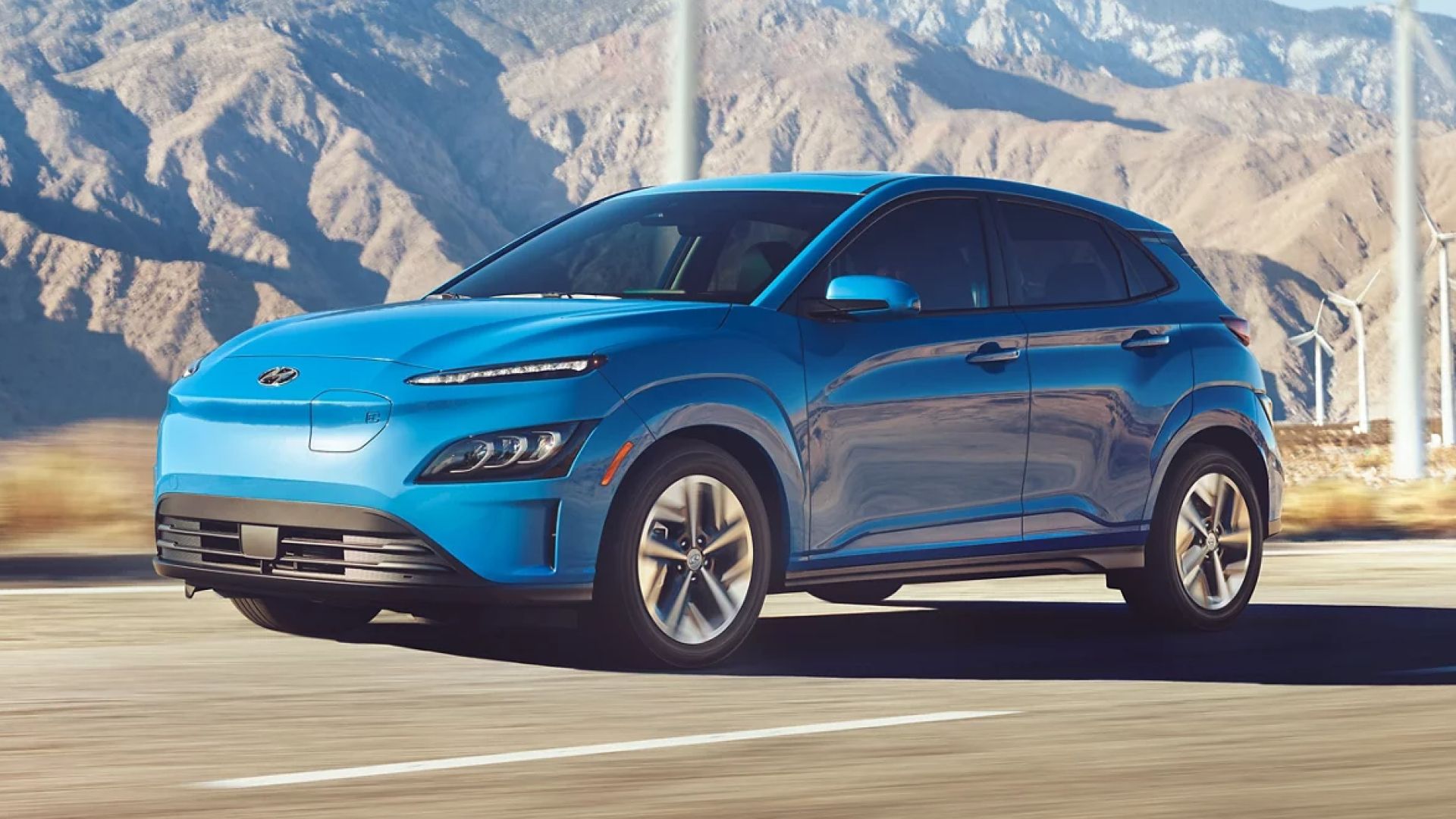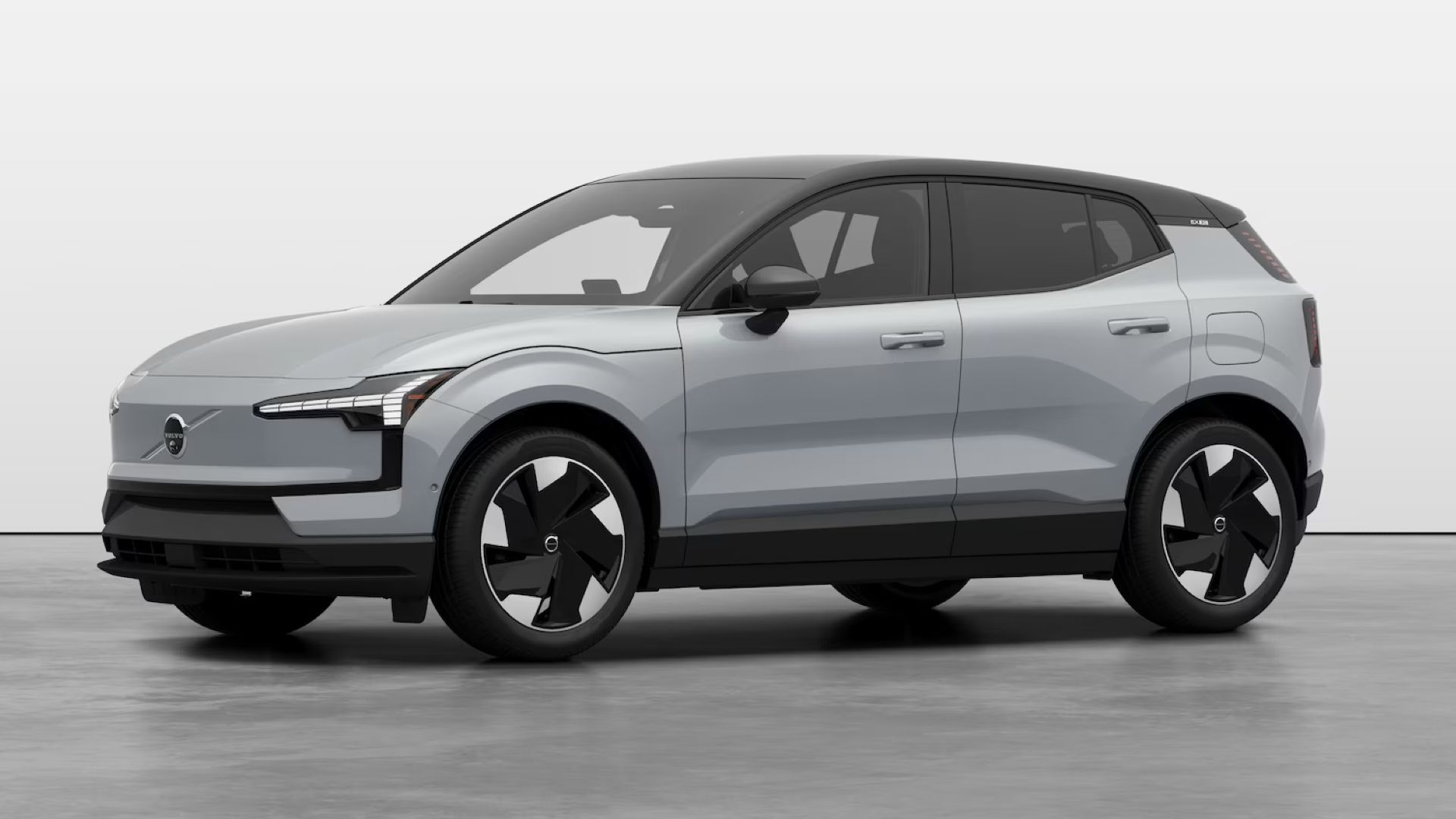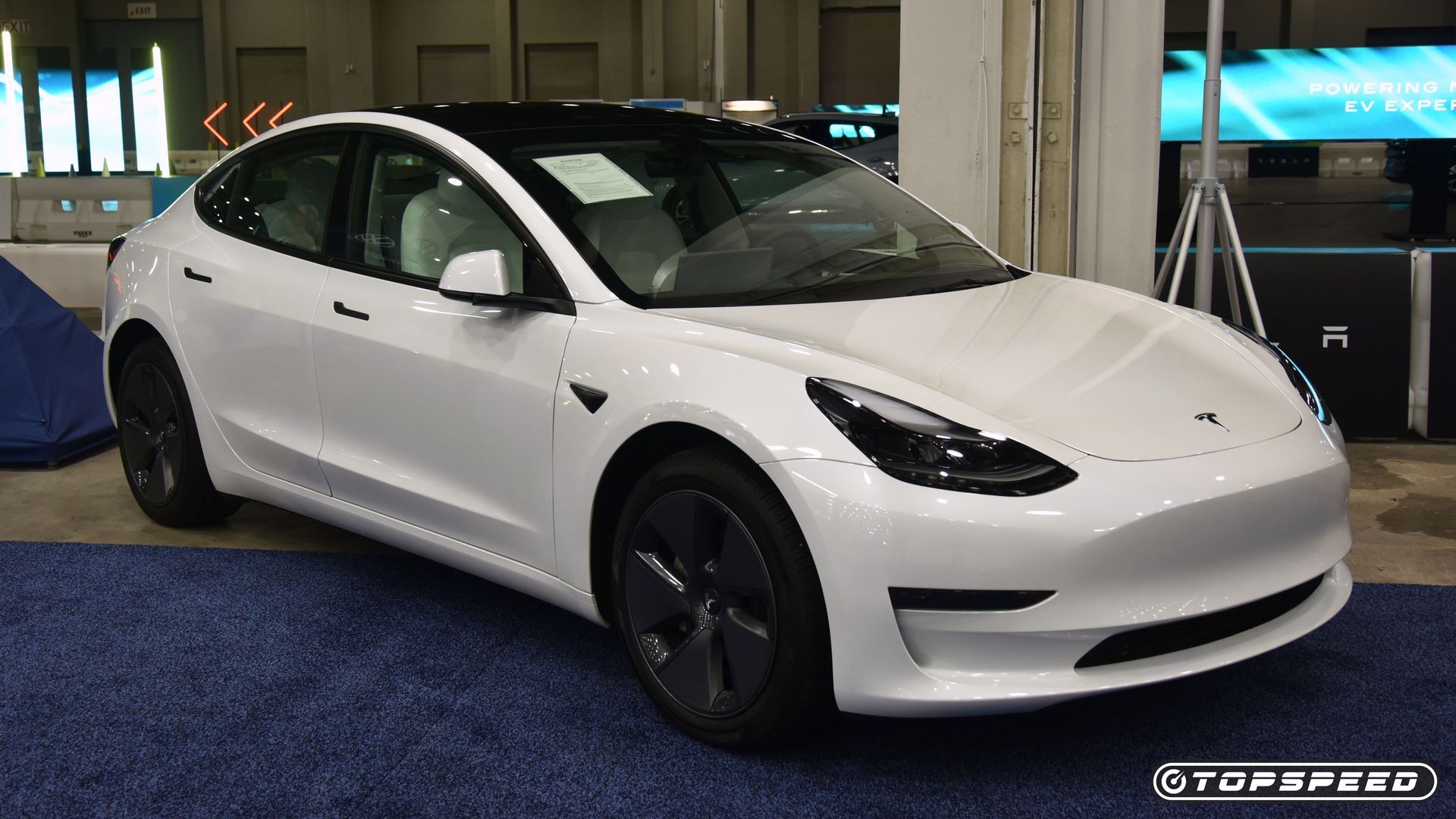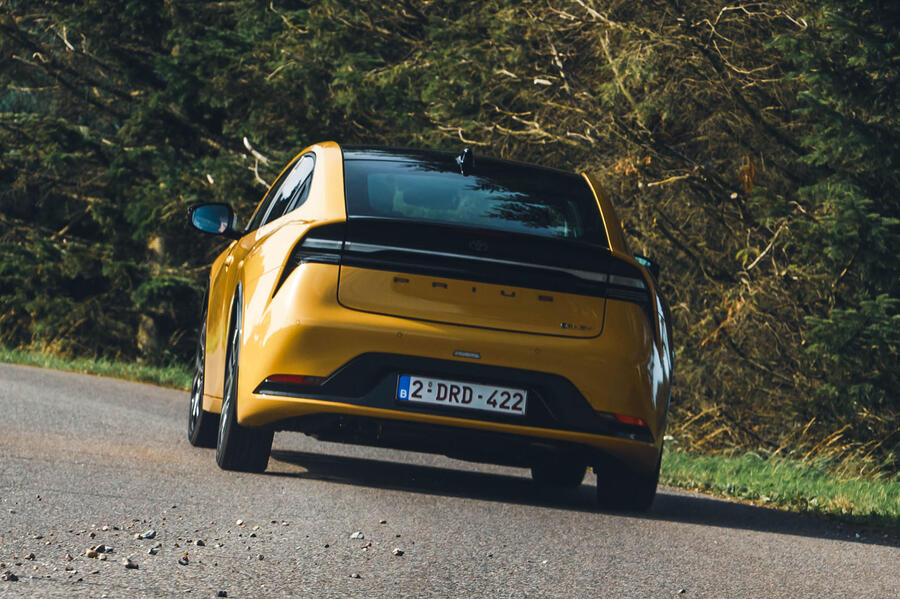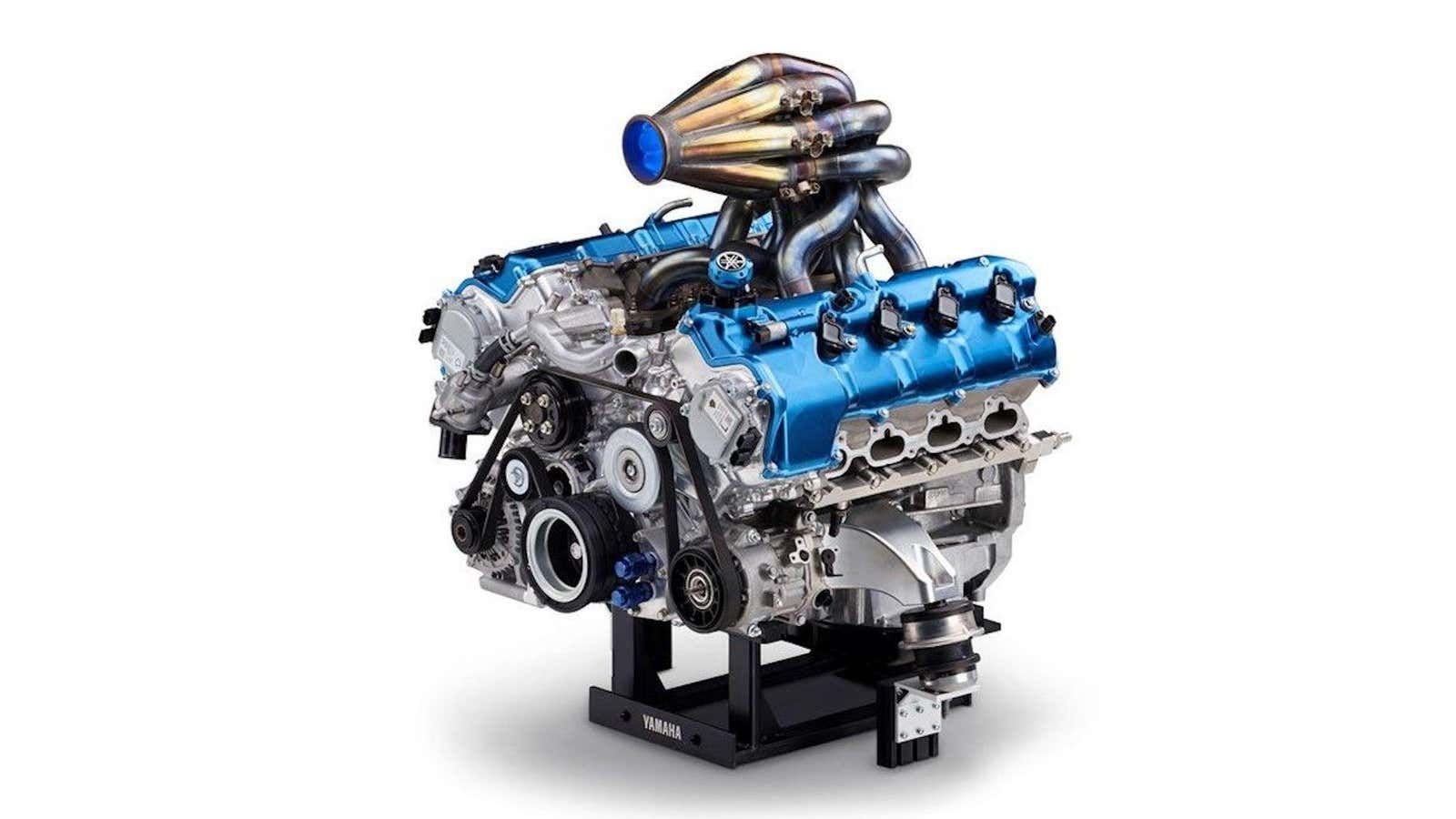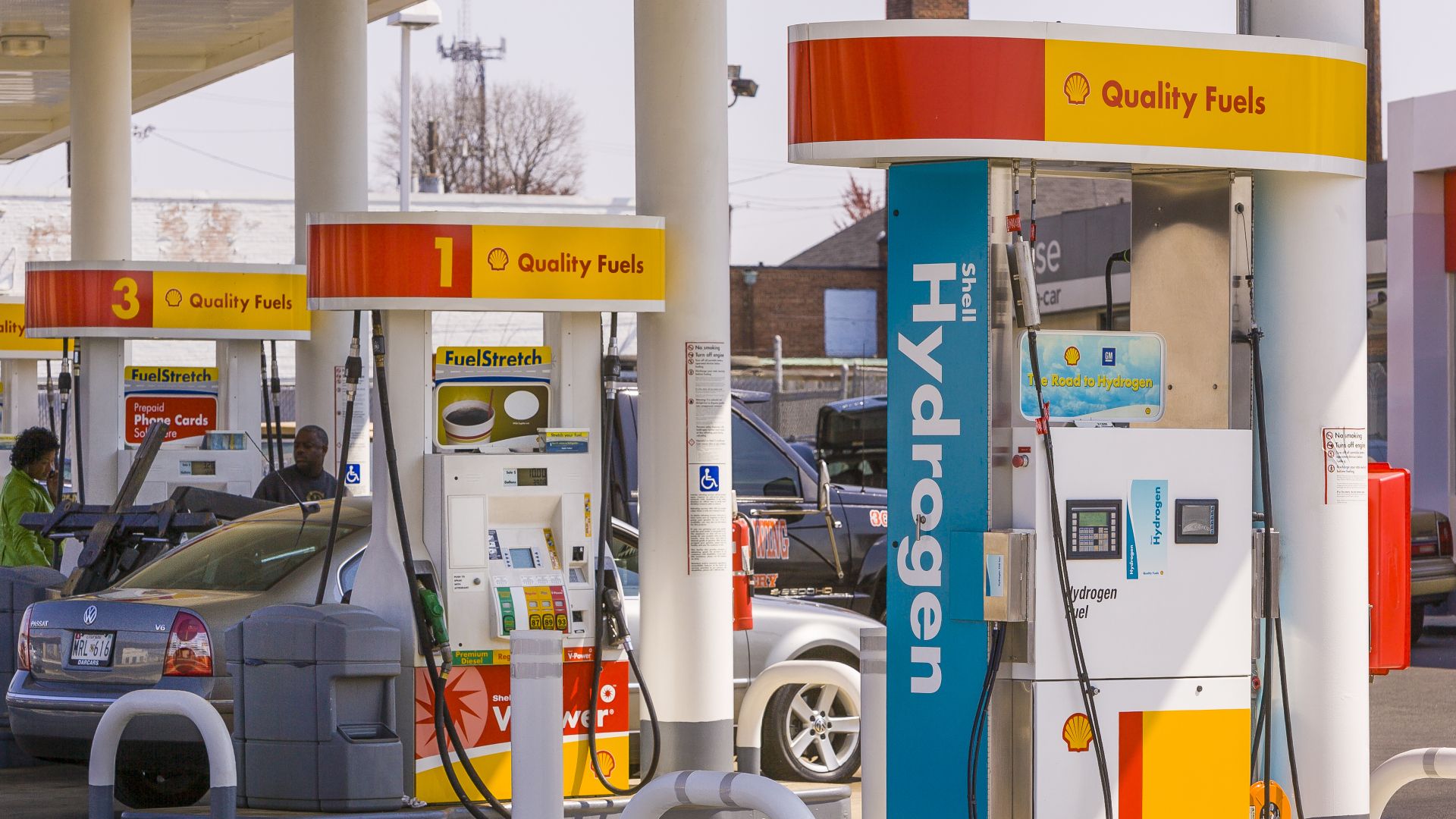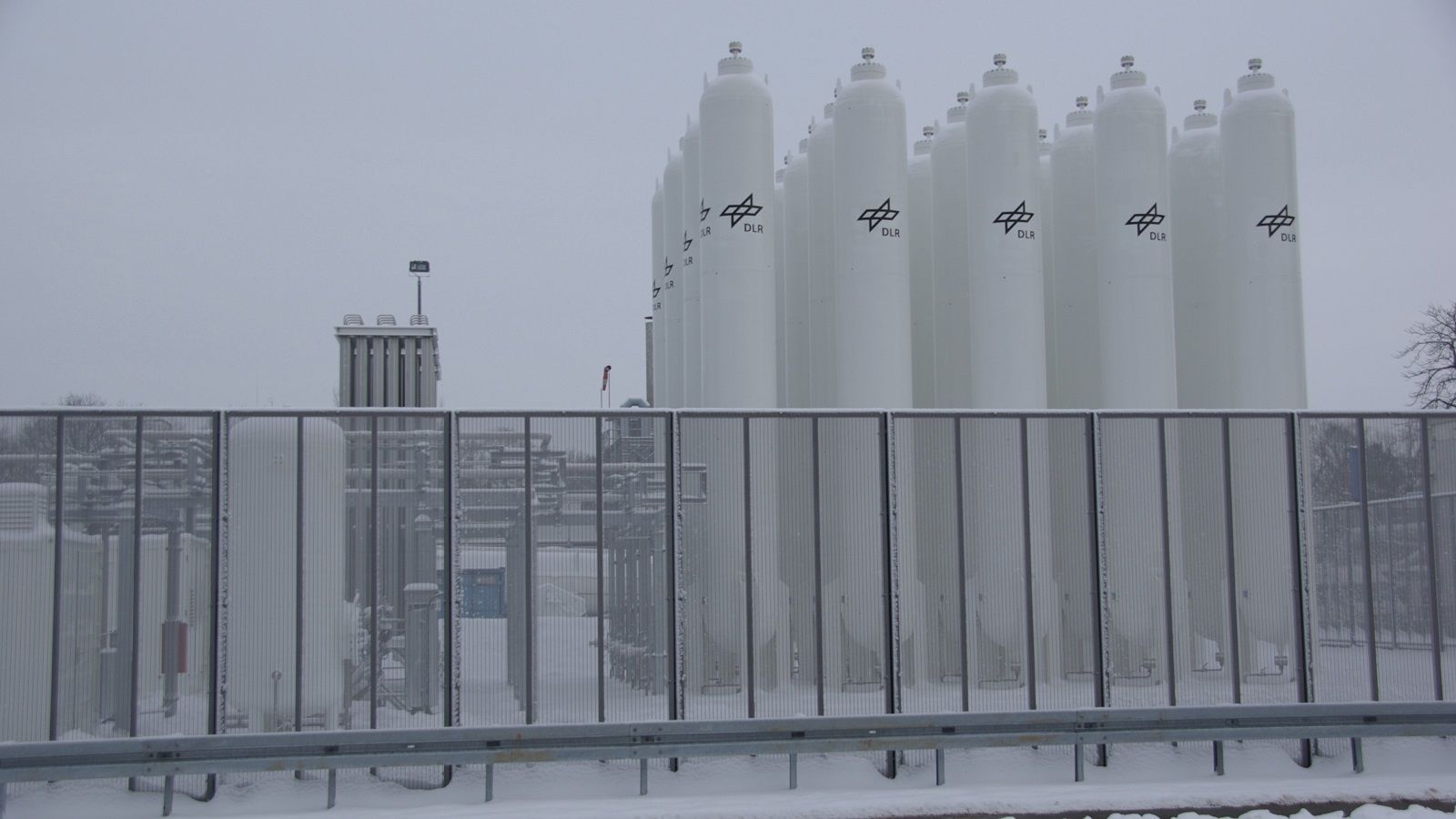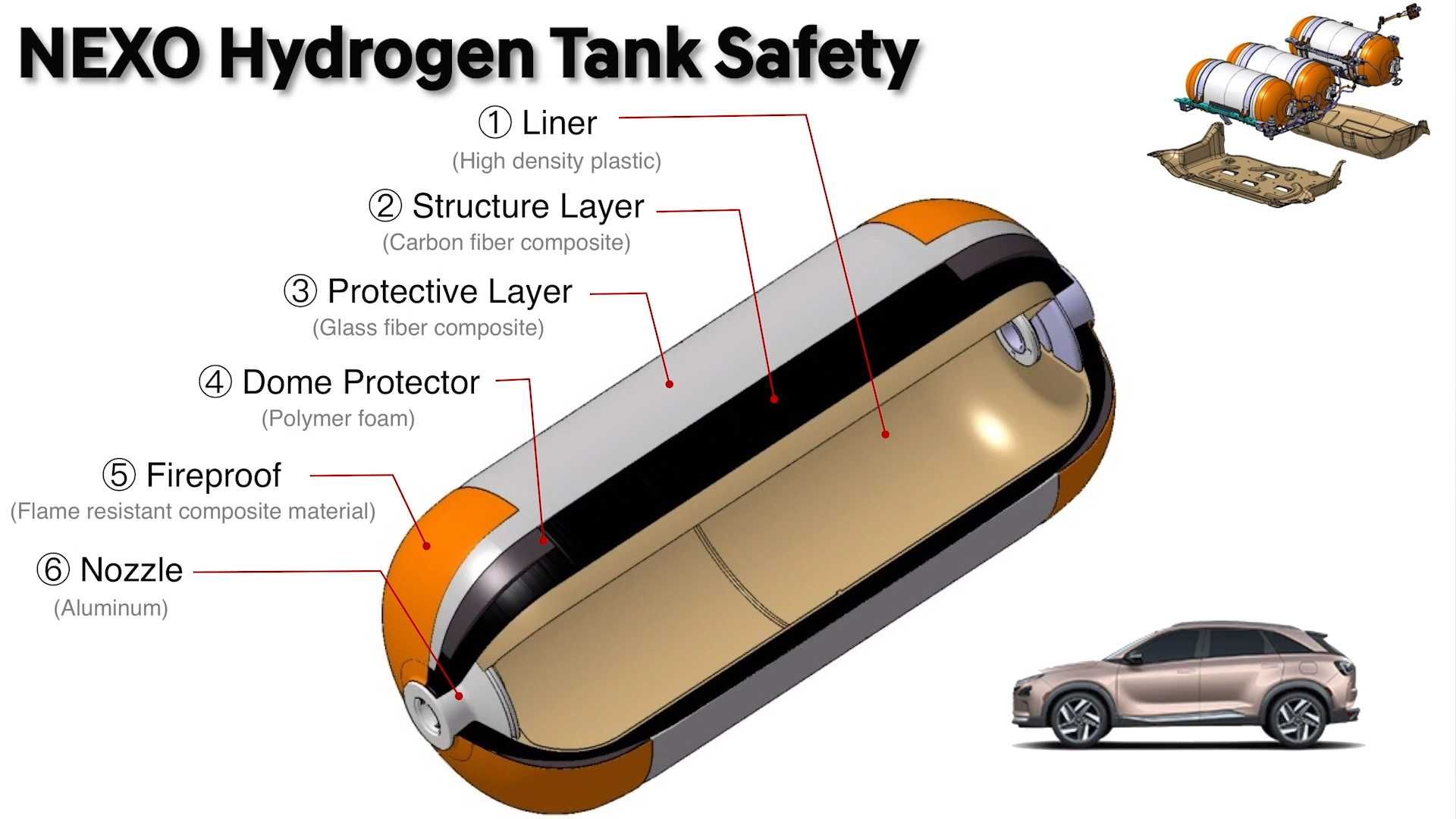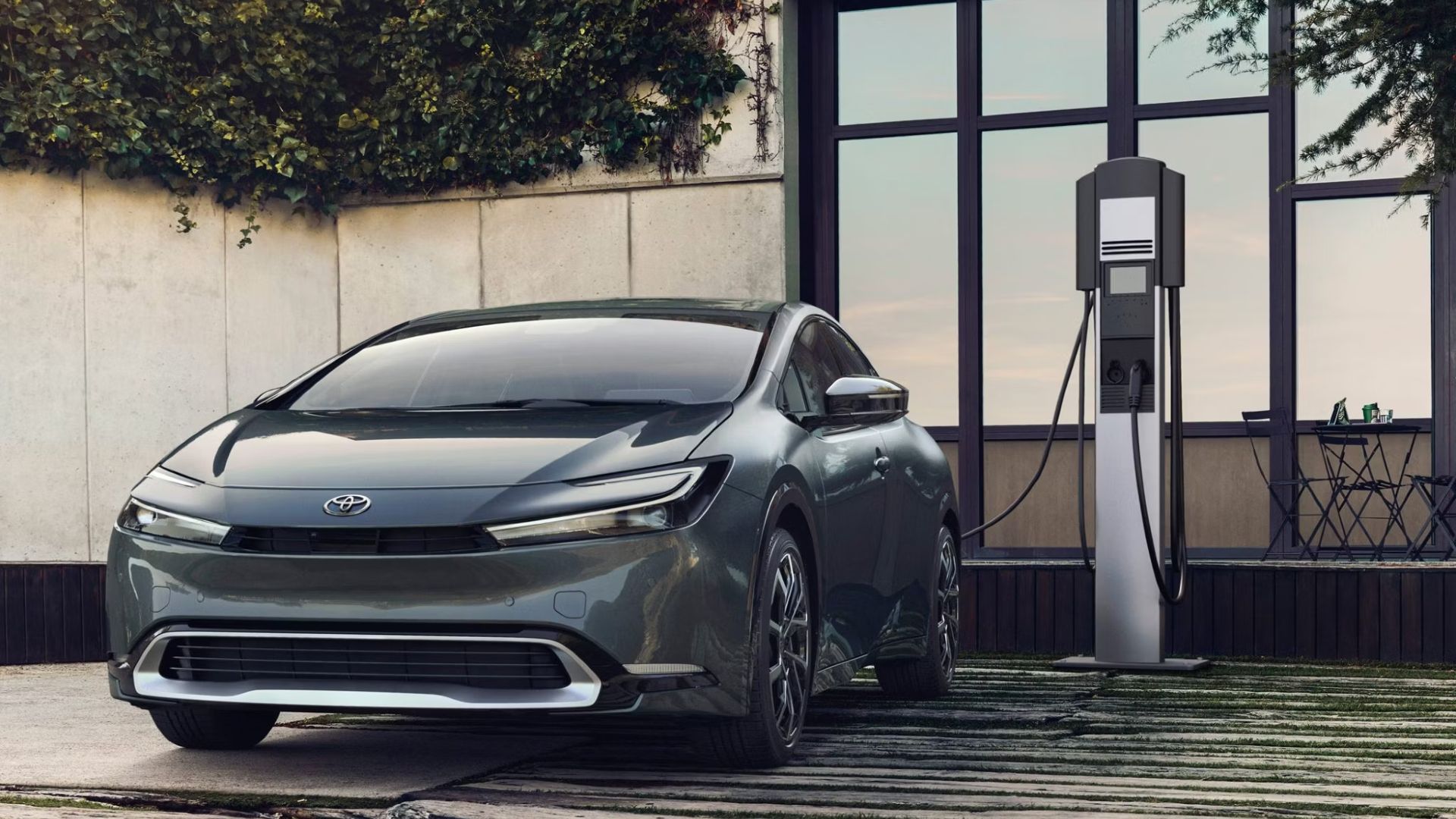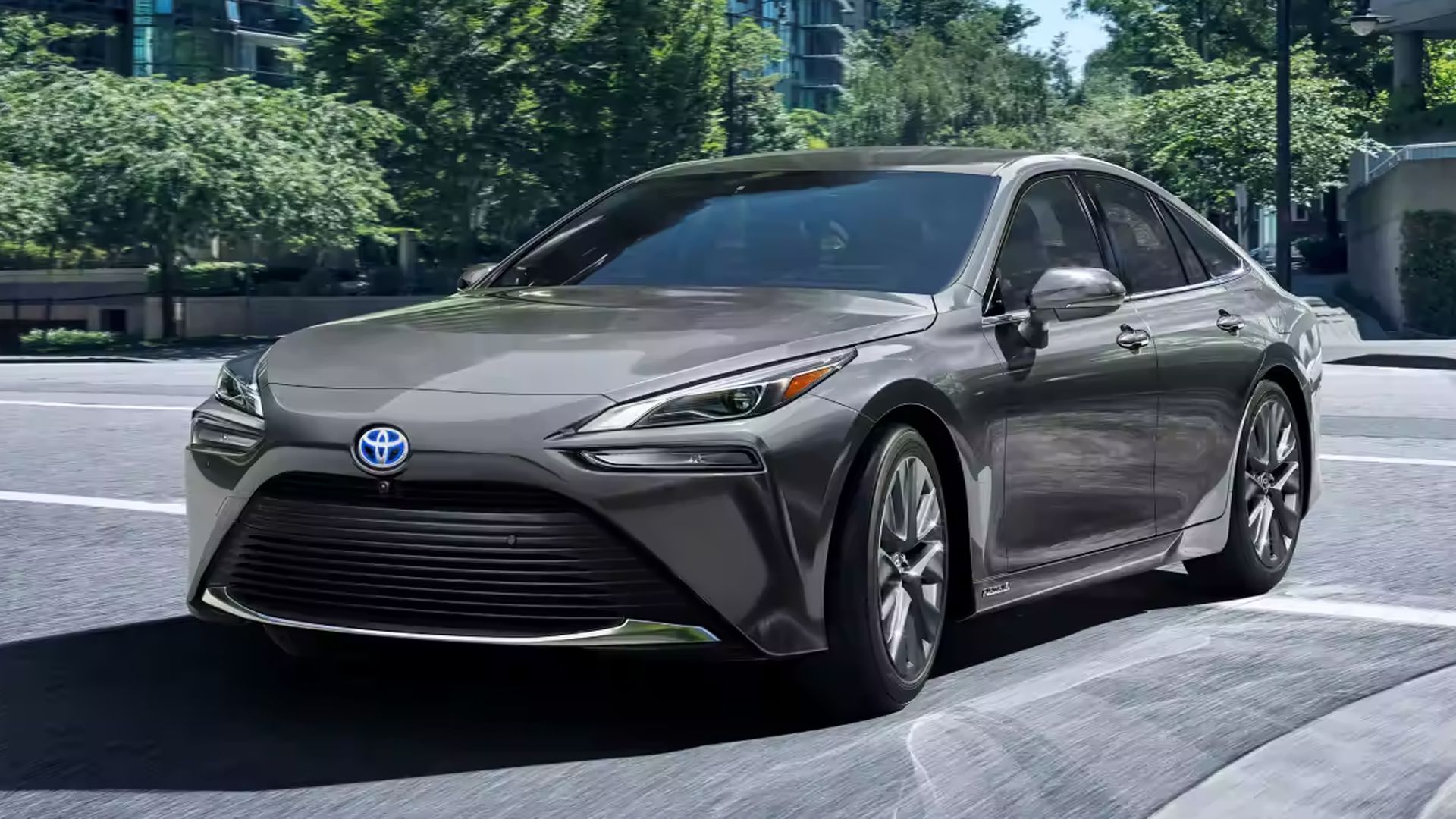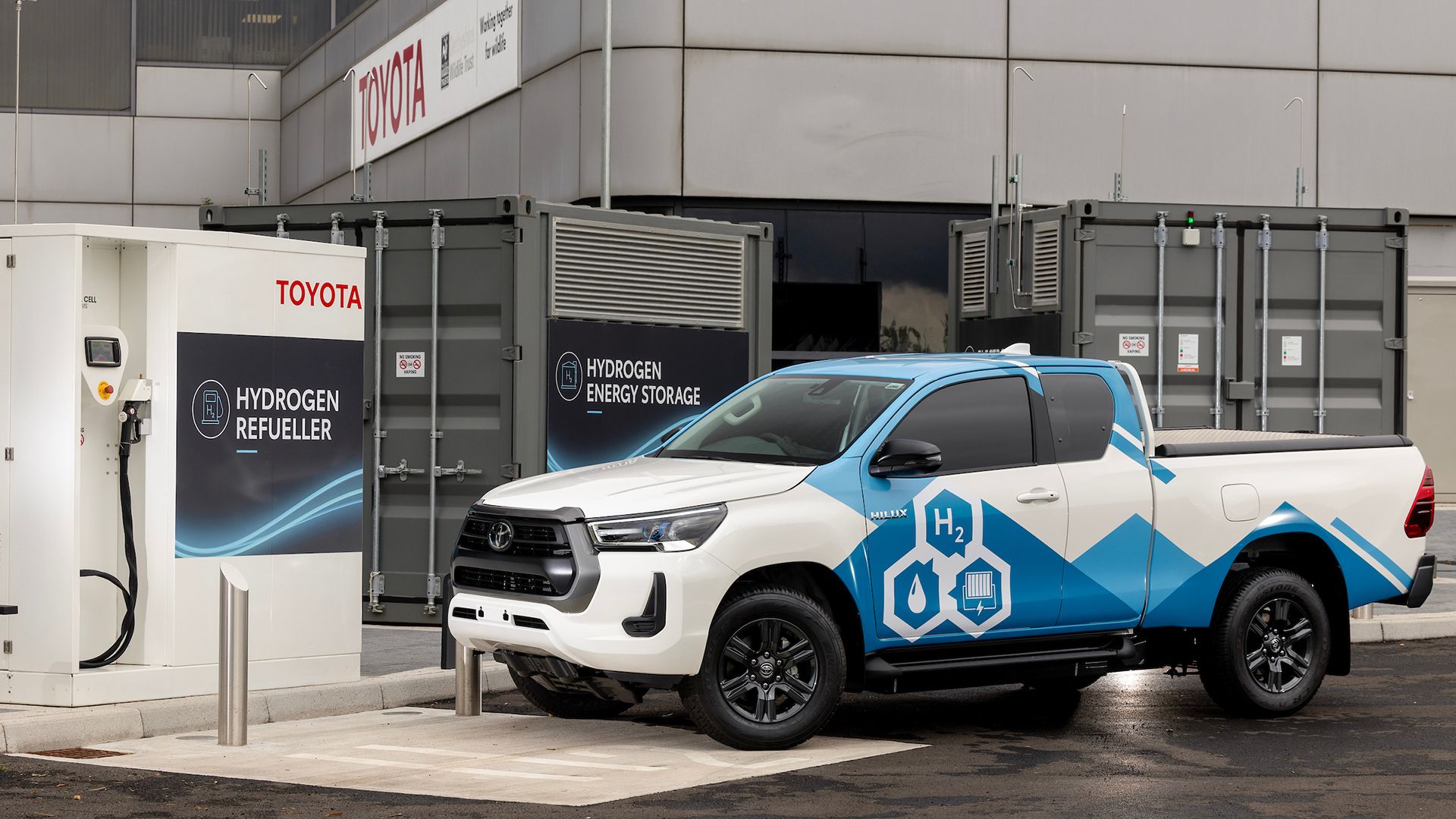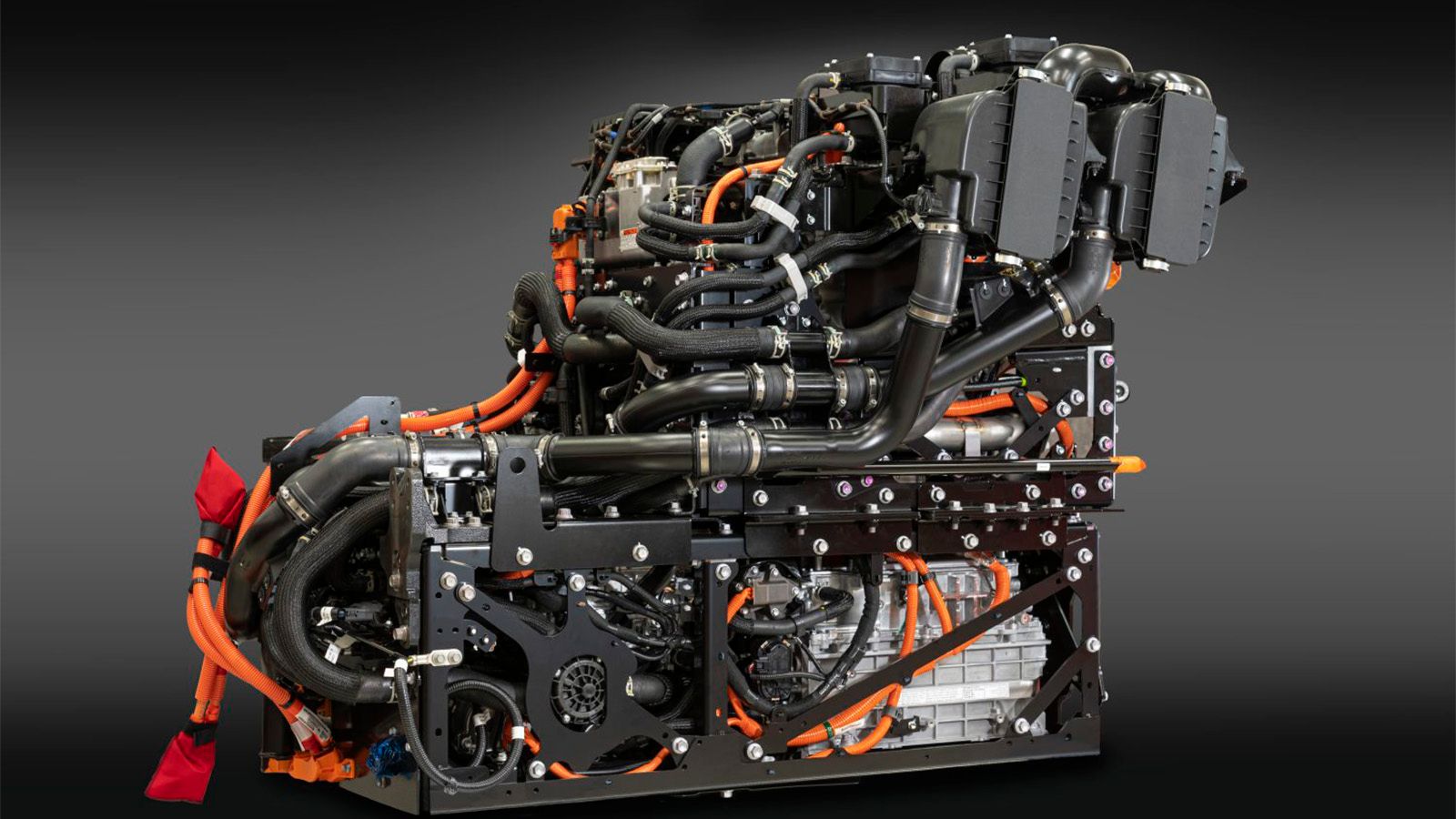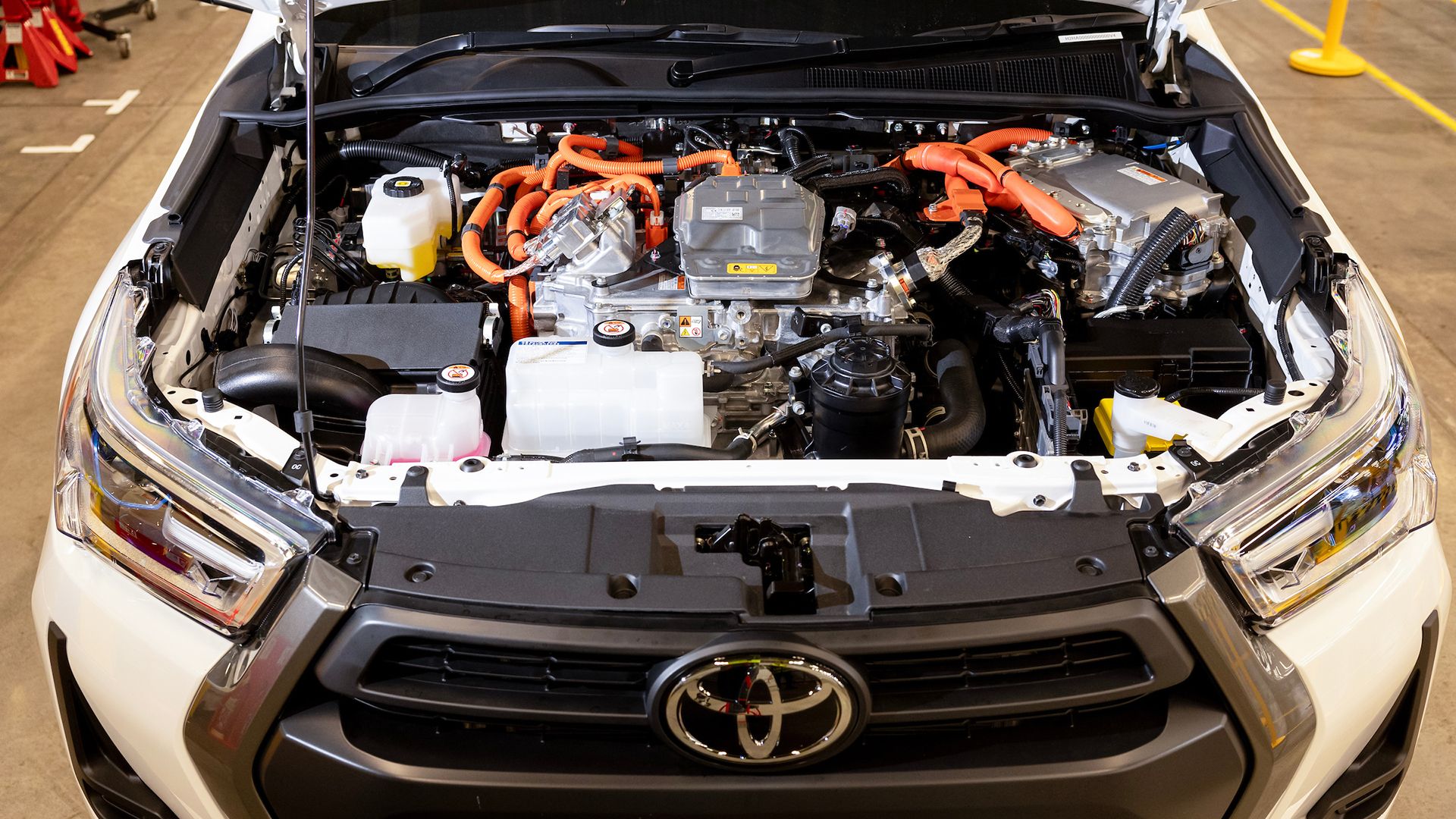In 2016, Toyota strategically positioned the Prius Prime as a solution to fill the gap between traditional hybrid and fully battery-electric vehicles, providing consumers with a flexible and eco-friendly choice. The 2024 Toyota Prius Prime starts at $32,675 for the SE trim, $35,925 for the XSE trim, and $39,370 for the XSE Premium trim.
The Prius Prime is known and proven to be a one-of-a-kind vehicle that is a harmonious blend of power, safety, sustainability, and unmatched fuel efficiency as a plug-in hybrid hatchback vehicle. But with the rise of the culture of electric vehicles, a lot of automakers are pumping out reliable and efficient vehicles like hotcakes. Some of these vehicles may or may not prove to be a compelling choice, depending on your choice, taste, and preference.
This list presents 10 all-electric alternatives for the Prius Prime, if you’re wondering you’d rather skip hybrids and take the plunge with EVs in an increasingly all-electric world.
All the information regarding performance, fuel economy, and dimensions of all cars have been taken from the automakers’ sites, EPA, Edmunds, and other reputable sources.
1 2023 Hyundai Kona Electric
Price Range: $33,550-$41,500
The 2023 Kona EV sets the standard for sleek, contemporary design and cutting-edge technology that puts it in the crosshairs of discerning drivers. With its standard Permanent-Magnet Synchronous Motor that powers the front wheels, the 2023 Hyundai Kona Electric produces a power output of 201 horsepower with 291 pound-feet of torque.
2023 Hyundai Kona Electric Specs And Performance
|
Battery |
64 kWh Lithium-ion |
|
Horsepower |
201 horsepower |
|
Torque |
291 pound-feet |
|
Drivetrain |
Front-wheel-drive (FWD) |
|
Transmission |
Single-speed reduction gear |
|
Fuel Economy – City |
134 MPGe |
|
Fuel Economy – Highway |
106 MPGe |
|
Fuel Economy – Combined |
120 MPGe |
|
All-Electric Range |
258 miles |
(Specs and figures sourced from Hyundai and EPA)
Starting at an affordable $33,550, the 2023 Hyundai Kona EV is offered in three trims: the SE which starts at $33,550, the SEL which starts at $37,300, and the Limited which starts at $41,550. The interior has a 10.25-inch touchscreen display with 45.8 cubic-feet of total cargo volume, and a conventional sunroof which comes standard with the SEL and Limited trims.
Eliminating your need to stop at the gas station, the 2023 Kona Electric utilizes 100 kW charging, jumping from 10-percent to 80-percent in as little as 47 minutes.
2 Volvo EX30 EV
Starts At $34,950
The Volvo EX30 stands proud as Volvo’s smallest SUV, but don’t be fooled by its small stature, because it packs a punch. The Volvo EX30 is released in single (RWD) and dual motor (AWD) drivetrains. With the power being distributed across the wheels with Direct Drive Automatic Transmission, the Volvo EX30 is as quick as 3.4 seconds to make the 0-60 miles-per-hour dash.
Volvo EX30 Specs And Performance
|
Single Motor (RWD) |
Twin Motor (AWD) |
|
|
Battery |
69 kWh Lithium-Ion |
69 kWh Lithium-Ion |
|
Horsepower |
268 horsepower |
422 horsepower |
|
Torque |
253 pound-feet |
400 pound-feet |
|
Drivetrain |
Rear-Wheel Drive |
All-Wheel Drive |
|
Transmission |
Direct Drive Automatic |
Direct Drive Automatic |
|
0-60 Miles-Per-Hour |
TBA |
3.4 seconds |
|
Fuel Economy – City/Highway/Combined |
TBA |
TBA |
|
All-Electric Range |
Up to 275 miles |
Up to 265 miles |
(Specs sourced from Volvo And Car and Driver)
With up to 31.9 cubic-feet of cargo capacity, the 2025 Volvo EX30 will utilize DC fast charging time to reach 80-percent charge in as little as 27 minutes. Both the RWD and AWD drivetrain options assure ample range on a single charge, with the Rear-Wheel Drivetrain offering up to 275 miles and the All-Wheel Drivetrain offering up to 265 miles.
3 Tesla Model 3
Price Range: $38,990-$45,990
The Tesla Model 3 is currently the cheapest Tesla available, with a starting price of $38,990, for the base model with Rear-Wheel Drive configuration. With its automatic transmission, the Tesla Model 3 Performance is as quick as 3.1 seconds to cross the 0-60 miles-per-hour mark, while the Tesla Model 3 RWD and Long Range take 5.8 and 4.2 seconds respectively. It can make up to 455 horsepower with 487 pound-feet of torque.
Tesla Model 3 Specs And Performance
|
Tesla Model 3 RWD |
Tesla Model 3 Long Range |
Tesla Model 3 Performance |
|
|
< 2024 Toyota Prius Prime: A Comprehensive Guide On Features, Specs, And Pricing2024 Toyota Prius PrimeThe 2024 Toyota Prius Prime enters its second year in the American market as a plug-in hybrid compact sedan powered by a 2.0-liter four-cylinder Atkinson engine and an electric motor producing a combined 220 horsepower. The PHEV can be had in SE, XSE, and XSE Premium trims, with prices starting at $32,350 MSRP.
Pros
Cons
The fifth-generation 2024 Toyota Prius Prime enters its second year in the American market as a plug-in hybrid compact sedan offering an attractive and distinctive exterior design, driving characteristics provided by the TNGA-C platform, and positioning itself as a compelling midway point for consumers interested in EV ownership.
What’s New For 2024The Toyota Prius Prime is a visually attractive car that blends an aerodynamic, sleek profile with futuristic lighting and trimmings.
Specifications And PerformanceThe 2024 Toyota Prius Prime is available with a drivetrain configuration consisting of an Atkinson-cycle, naturally aspirated 2.0-liter four-cylinder engine connected to a pair of electric motors that drive the front wheels via an e-CVT. The gasoline engine produces 150 horsepower and 139 pound-feet of torque, while system output sits at 220 horsepower, thanks to the two electric motors. A 10.9 kWh lithium-ion battery pack powers the car for 44 miles on the SE trim and 39 miles on flagship variants.
2024 Highlights
Performance SpecificationsThe Prius Prime’s biggest achievement is its low fuel consumption capabilities. Admittedly, it is marginally less efficient than the previous-generation Prime, but given it uses a larger engine with more power, it’s still a commendably light gasoline-electric PHEV.
2023-to-2024 ChangesThe fifth-generation Toyota Prius Prime enters its second year of production with no noteworthy changes, which is bearable considering how much has been changed from the previous-generation model. Toyota has left almost every single component in the past and built an all-new car from the ground up thanks to its compelling TNGA technology.
Toyota Prius Prime Charging Time And RangeAll Prius Prime models come standard with a Level One charging cable for 120V outlets.
Interior Technology, Luxury, And ComfortBest Interior Features Of The 2024 Toyota Prius Prime
Safety And ReliabilitySafety is a top priority for the Toyota Prius Prime, as the manufacturer includes all essential features as standard across the range.
Exclusive: New Toyota Prius to be Released in the UKThe latest Toyota Prius will soon be available for purchase in the UK, according to Autocar. Previously, the release of the fifth-generation Prius in the UK was postponed due to the high demand for SUV models. Last year, Toyota explained that the decision not to offer the new Prius in the UK was due to changes in market conditions and their evolving product strategy. The company noticed a shift in UK consumer demand towards SUV-style vehicles. Toyota also mentioned that Prius sales in the UK were not as strong as their other hybrid models, such as the C-HR crossover and Corolla hatchback. However, Autocar has learned that the Prius hybrid hatchback will now be introduced in the UK, with an official announcement expected soon. The sales of parallel- and plug-in hybrids have likely contributed to the strengthened business case for this model. In the UK, both types of hybrids saw an increase in market share compared to the previous year, as of September.
The latest Prius is built on the updated version of the TNGA platform, which was used for the previous generation. However, the new model features significant modifications to enhance its stiffness, refinement, and stability. Globally, the new Prius offers two powertrain options: a front-wheel-drive 2.0-liter parallel hybrid with 191bhp, and a four-wheel-drive 221bhp plug-in hybrid. The plug-in hybrid version can accelerate from 0-62mph in just 6.7 seconds, making it the fastest Prius to date. The plug-in hybrid also comes with a 13.6kWh lithium-ion battery, capable of providing an electric driving range of 53 miles, according to official figures. While the roof of the Prius is equipped with a solar panel that can contribute energy for approximately 777 miles of electric driving per year, it is uncertain whether this feature will be available in the UK. The interior of the Prius has been redesigned with an emphasis on material quality and driver comfort. It comes with a standard 7.0-inch digital driver display, strategically positioned to minimize distraction while driving. The central infotainment screen is a new-generation version based on the one found in the latest Corolla and Toyota RAV4 models. Toyota’s Upcoming Hydrogen-Powered 5.0 V-8 Engine Has The Potential To Bury EVsSince it launched the revolutionary Prius in 1997, Toyota has been a pacesetter in hybrid and plug-in hybrid automobiles, which paved the best way for the present electrical automobile craze. However, despite its roots, the Japanese model has been hesitant to leap headfirst into the all-electric development. Toyota’s first 100-percent EV, the awkwardly named BZ4X, has bought solely a few hundred units as of mid-October, and the Japanese carmaker does not plan to ramp up manufacturing till 2025. Toyota’s slowness in adopting all-electric automobiles was bolstered by the corporate’s president, Akio Toyoda. As the Wall Street Journal reviews, “People involved in the auto industry are largely a silent majority,” Toyoda stated. “That silent majority is wondering whether EVs are really OK to have as a single option. But they think it’s the trend, so they can’t speak out loudly. Because the right answer is still unclear, we shouldn’t limit ourselves to just one option.” Although that sentiment is controversial, it deserves consideration. All-electrics quantity to solely a fraction of the overall new automobile market, which leaves the market open for an additional type of automobile, which is the route Toyota has chosen. Let’s take a better have a look at any such engine, the hydrogen combustion engine, and see why Toyota executives assume it will probably probably make EVs out of date. Updated October 19, 2023: With Toyota shortly growing hydrogen automobiles throughout its world manufacturing line, there are execs and cons to the know-how. This submit has been expanded to replicate that, in addition to perception into what the long run might be for hydrogen/fuel-cell manufacturing. Toyota might be onto one thing very huge. Information for this text has been sourced Toyota primarily and from credible publications like Kelley Blue Book.
1 Introducing The Corolla Cross H2 Concept
The Toyota Corolla Cross H2 Concept makes use of a brand new prototype hydrogen Internal Combustion Engine (abbreviated “ICE”) automobile known as the Corolla Cross H2 Concept. Power comes from the recent 1.6-liter turbocharged three-cylinder used within the GR Corolla and GR Yaris, transformed to utilizing Hydrogen as a gasoline. To start with, thick, armored gasoline tank(s) are required for holding the extremely flammable hydrogen know-how that Toyota gleaned from its FCEV (Fuel Cell Electric Vehicle), the Mirai. The engine will get hardened valves and valve seats, stronger connecting rods, and gasoline injectors designed for gasoline, not liquid. Like a regular Corolla, the Cross H2 Concept has room for 5 passengers and their baggage. 2 A Large Hydrogen Powered V-8 Is In The Works
In thrilling information to gearheads in every single place, Toyota has partnered with Yamaha Motor to develop a hydrogen-fueled V-8 engine. In an announcement earlier this 12 months, Yamaha stated the 5.0-liter V-8 could be based mostly on the one utilized by the Lexus RC Coupe, with modifications to its cylinder heads and gasoline injectors, amongst different issues. Yamaha claims it’s going to produce 455 horsepower at 6,800 rpm and 398 pound-feet of torque at 3,600 rpm. That’s a bit much less energy than the unique gasoline V-8 that it is based mostly on, however nonetheless fairly respectable. But probably the most beautiful function of the hydrogen V-8 needs to be the eight-into-one top-mounted exhaust manifold, which Yamaha claims creates a definite high-frequency sound. 3 Hydrogen Powered Cars Are Quickly And Easily Refueled
You should admit that regardless that filling up your gas-powered ICE automobile will not be the spotlight of your day, it isn’t rocket science. Filling up a hydrogen-powered automobile is simply as straightforward however doesn’t take practically as lengthy to perform as a result of it’s a gasoline somewhat than a liquid. If you’ve gotten ever had a propane tank crammed (not traded out for a brand new one), you perceive how briskly the method might be. In truth, the brand new Toyota Yaris GRH2 solely takes a minute and a half to fill utterly filled with Hydrogen, which is far quicker than it will take to fill the tank on a Toyota Camry with unleaded.
4 Hydrogen Has A Broad Climate Adaptability
Diesel gasoline has lengthy been utilized in automobiles that must be used for hauling and towing extreme hundreds, however they will freeze in areas the place the temperatures drop down into the damaging double digits. Thankfully, unleaded gasoline can face up to temperatures of as much as -100 levels Fahrenheit which might occur with some chilly windchill elements. Lithium batteries can face up to as much as -140 levels Fahrenheit earlier than they begin to freeze up, which might nonetheless happen sometimes. Hydrogen can withstand -435 degrees Fahrenheit, which exhibits it’s your best option in chilly temperatures worldwide. The similar holds true when evaluating the recent finish of the spectrum: Hydrogen has a wider local weather adaptability than the opposite two choices at the moment obtainable. 5 Hydrogen Fuel Systems Avoid Material Scarcity Problems
Lithium batteries are not made out of materials that can easily be produced. In truth, many individuals, such because the CEO of Toyota (former CEO Akio Toyoda), see a scarcity of lithium and battery-grade nickel, which implies that there might be an absence of supplies wanted to supply the lithium batteries utilized in EVs. That might create a serious setback within the transfer in direction of electrical automobiles, which might be prevented by utilizing hydrogen-powered engines if they’re engineered to maximise their full potential. 6 Hydrogen Driven Engines Sound And Respond Like Fuel Driven Engines
Sound is among the largest complaints you could have with EV automobiles and vehicles. If you’ve gotten ever pushed an outdated basic muscle automobile, corresponding to a 1970 Chevrolet Chevelle SS with an enormous block 454 or a 1969 Ford Mustang with a 428 Cobra Jet, nothing can evaluate with the thrill as you press the accelerator to the ground. The sound because the carbs open up and the gasoline rushes into the chambers, energy rushes via your chest as quickly because the horsepower hits the drivetrain, and adrenaline hits in full because the automobile launches. EVs can’t give that to you, however a hydrogen-powered car can because it works in the same general way.
7 Hydrogen Engines Are Completely Mechanical
Small native mechanic outlets may be discovered on nearly each nook throughout the nation, however as EVs turn out to be extra standard with customers, these small garages will not be an choice for you. They might be able to log on, watch a couple of YouTube movies, and work out methods to restore your electrical engine. Still, it’s extremely steered that you just take it to a registered mechanic accustomed to the brand new know-how. The great thing about hydrogen-powered engines is that since they’re so much like fuel-powered engines, they’re completely mechanical. That implies that these small nook outlets that you’re snug taking your automobiles to will have the ability to work on them. 8 This Technology Has A Checkered Past
The idea of powering an inside combustion engine with Hydrogen is just not new. Most notably, German automaker BMW produced the 750HL in 2002, followed by the Hydrogen 7 in 2005. The Hydrogen 7 was based mostly on BMW’s conventional gasoline-powered 6.0-liter V-12 however with modifications to burn Hydrogen and gasoline. That technically made it a dual-fuel engine and solely 100 whole had been produced. Some downsides to Hydrogen are that it is extremely flammable, tough to course of and retailer, and the combustion course of emits nitrous oxide. 9 EVs Are Not Without Fault Either
As against nearly all the opposite automakers who’re betting all the things on electrical automobiles, Toyota’s strategy to carbon neutrality is extra diversified, evaluating a number of applied sciences to attain the purpose of zero emissions. This ethos appears more and more prescient when contemplating that with the struggle in Ukraine and its impression on vitality provides, European international locations are in search of methods to chop vitality use. In truth, Switzerland has gone so far as to encourage EV drivers to only use their cars for urgent needs like going to work or the grocery retailer – and it might be codified into regulation.
10 The 2023 Mirai Is Making Headlines
With Toyota investing closely in hydrogen energy, we’re seeing extra fashions come to market utilizing it as an influence supply. For instance, the 2023 Mirai is hydrogen-powered and has already began rolling off manufacturing, hitting dealerships, and being driven by people throughout California and has been bought in Europe. Hydrogen-powered automobiles are nonetheless very new to the scene, however demand continues to develop for them. That stated, worldwide, Toyota sold 1,674 Mirai vehicles in the first five months of this 12 months — a 13.3 % fall on the identical interval in 2022. More individuals really feel protected in an EV (for now), so this can require re-education of markets the place hydrogen is bought. Many believe your next vehicle should be hydrogen-powered, nevertheless it’s not sufficient. 11 Toyota Is Placing Huge Bets On Hydrogen At Its U.S. Plants
With Toyota quickly shifting within the EV, PHEV, and hydrogen route, it is value noting that a few of its U.S. factories will see gasoline cell batteries manufactured inside them. According to a press launch from Toyota, a dedicated line at Toyota Motor Manufacturing Kentucky (TMMK) will start assembling built-in twin gasoline cell (FC) modules destined to be used in hydrogen-powered, heavy-duty industrial vehicles. This is more likely to unfold to different US and world services as Toyota ramps up hydrogen manufacturing. 12 Hydrogen Vehicles Won’t Explode Or Catch Fire As Easily As Lithium-Ion Batteries
One of the highest security issues with hydrogen vitality getting used on the industrial stage has been the chance of explosion. Some consultants declare a hydrogen explosion resembles extra of a bomb than a typical spark and fireplace, which has brought about individuals to be cautious. However, in comparison with the frequency of lithium-ion overheating or reacting poorly to environmental circumstances, hydrogen (when dealt with appropriately) hydrogen can be a safer, less reactive energy source. It’s additionally value noting that Hydrogen gasoline itself is 200 instances lighter for a similar quantity of vitality as lithium batteries. Hydrogen shops much more vitality than gasoline, so it may be an important supply of vitality for even large-scale consumption.
13 Hydrogen Means Your Car Will Last Longer
Mixed with Toyota’s engineering and talent to supply gasoline cell know-how at a mass scale, we might simply see hydrogen automobiles breaking down much less and requiring fewer journeys for upkeep. Although hydrogen automobiles are powered by electrical motors, they will not be solely specializing in charging, battery well being, and eventual degradation. The similar comparability may be made to ICE, with common engines finally breaking down and failing. Hydrogen, though at the moment tough to work with, can turn out to be simplified with sufficient testing and funding from manufacturers like Toyota. The gasoline cell stacks are designed to final the lifetime of the automobile, about 150,000–200,000 miles. Once your hydrogen automobile dies otherwise you’re achieved with it, the gasoline cell might be disassembled and the supplies recycled, much like what occurs with automobile elements at this time. There are currently 10+ hydrogen cars in the works, so it seems to be a race to the end line for auto producers. 14 Toyota Has Joined Forces With Other Investors In Its Race To Perfect Hydrogen Combustion Engines
As a part of creating and perfecting hydrogen combustion engines, Toyota has seen traders within the idea. The emergence of the Hydrogen Council, a worldwide consortium comprised of prime executives from outstanding firms within the gasoline, vitality, manufacturing, and mining sectors, underscores the rising significance of hydrogen. Members of the council, corresponding to Air Liquide, Alstom, BMW, Daimler, Shell, and Toyota, have collectively dedicated $5 billion for hydrogen-related investments over the following 5 years. Their goal is to streamline and speed up hydrogen investments throughout varied industries into the following decade. Toyota has the time, cash, and energy to do that. 15 For Now, Hydrogen Toyota’s Will Mainly Be Produced For Chinese And European Markets
Although we’ve seen the Mirai pop up in California within the US, Toyota’s predominant focus for hydrogen automobiles stays in China and Europe. Per the corporate, it should concentrate on rolling out hydrogen-powered automobiles in Europe and China with the aim of selling 200,000 units by 2030. This is an enormous purpose to set for such a brand new know-how for the Japanese model, however they’re identified to push the boundaries. Hydrogen-powered automobiles have achieved higher in European and Chinese markets, and they’re quickly to turn out to be extensively obtainable to customers. The United States will not see many for a couple of years if present projections maintain true. 2024 Toyota Prius, Crown Receive Minor Updates and Price IncreasesThe fifth-generation Toyota Prius made its way to North America in 2023, boasting an unexpected appealing design and an optional all-wheel drive. Around the same time, Toyota introduced the new Crown as a replacement for the Avalon. Now, both vehicles are entering the 2024 model year with minimal improvements and corresponding price hikes. Regarding the 2024 Prius, there isn’t much to mention aside from a few additional exterior color options. The color choices now include Guardian Gray, Midnight Black Metallic, and Reservoir Blue as standard options, while Supersonic Red and Wind Chill Pearl are available as optional hues. Similar to last year, the model is offered in three trim levels, each available in both front-wheel-drive and all-wheel-drive configurations. Every 2024 Prius comes equipped with Toyota’s Safety Sense suite of safety and assistance systems. First drive: 2024 Toyota PriusThe 2024 Toyota Prius has been completely redesigned and offers impressive performance and handling. It feels agile and responsive, with precise steering and a willingness to tackle corners. The ride is also smooth and comfortable, making it a joy to drive. However, while the exterior of the Prius is eye-catching, the interior lacks the same appeal. The drab steering wheel, borrowed from the Toyota bZ4X, is a disappointment. On the plus side, the dashboard features a good number of physical controls, including those for the heating and ventilation. The infotainment touchscreen on top of the dash is clear and has good graphics, and the driver display is positioned in a way that it is easy to see without obstructing the view. One trade-off of the sleeker profile of the new Prius is the reduced rear space for passengers. The narrower windows create a cozier feel, and the rear interior door handles may require some explanation for unfamiliar passengers. It’s a shame that UK buyers won’t have the opportunity to experience the capable 2024 Prius. Toyota Prius PHEV Verdict 4 stars Engine: 4 cyls in line, 1987cc, petrol, plus 161bhp permanent magnet synchronous motor Toyota Prius Prime Vs Mazda3 And Subaru WRX: A Surprising Drag RaceAre we really talking about a Toyota Prius drag racing? Is that what the world has come to? The better question to ask is, what has the Prius evolved into? And the answer is yes. Now, the 2023 Toyota Prius Prime is not marketed as a performance vehicle. However, it does boast 220 horsepower from its hybrid powertrain, which includes a naturally aspirated 2.0-liter four-cylinder engine paired with a single electric motor. According to Toyota, this is enough to propel the Prius Prime from 0 to 60 mph in 6.6 seconds. That’s slightly faster than a Honda Civic Si and only a few tenths behind a Volkswagen GTI – two cars that are known for their performance capabilities. History Of The Toyota PriusThe Toyota Prius played a significant role in popularizing hybrid vehicles, being the first mass-produced hybrid car when it was introduced in 1997. While the Prius faced criticism for its lack of luxury appeal, it has enjoyed remarkable longevity. In 2022, the Toyota Prius celebrated 25 years of production, a feat many other models fail to achieve. Despite not being a high-end product, the Prius offers decent reliability, technology, and features. First Generation (1997-2003): The First Prius Couldn’t Run Even Half A MileIn 1993, Eiji Toyoda, Toyota’s honorary Chairman, initiated the G21 project to develop a new vision for cars. After considering various options, the team decided to pursue a hybrid vehicle, as conventional methods couldn’t achieve the required fuel efficiency. The initial prototype of the Prius faced numerous technical challenges, but the team persevered and introduced the first Prius in 1997. The car exceeded expectations by offering double the fuel efficiency of gas-powered vehicles. Second Generation (2004-2009): The Prius Becomes The People’s Car And Hollywood’s Favorite HybridThe second-generation Prius, introduced in 2004, featured the Toyota Hybrid System II, delivering improved fuel efficiency and performance. The model gained popularity, with celebrities like Jennifer Aniston and Leonardo DiCaprio choosing the Prius. Third Generation (2009-2015): The Prime YearsThe third-generation Prius, while successful in terms of sales, faced safety concerns and recalls related to braking and system failures. Despite these issues, the Prius continued to sell well. Fourth Generation (2015-2022): The Downfall BeginsThe fourth-generation Prius featured a redesigned look, improved aerodynamics, and better fuel economy. However, sales declined significantly in the US during this period. Fifth Generation (2022-Present): Best Model, Worst Sales FiguresThe fifth-generation Prius, represented by the 2022 Prime model, offered improved design and performance. However, sales remained low. The Prius Prime boasts a range of up to 654 miles and an efficiency of up to 133 MPGe, but faces tough competition from other hybrids and affordable electric vehicles. History Of The Toyota PriusThe Toyota Prius played a significant role in putting hybrid vehicles on the map. While Ferdinand Porsche designed the first-ever hybrid car in 1900, the Toyota Prius became the first mass-produced vehicle with a hybrid powertrain in 1997. Despite initially facing ridicule for its lack of premium appeal, the Prius has enjoyed impressive longevity. The 2022 Toyota Prius celebrated 25 years of production, a remarkable achievement in an industry where many models disappear after just a few years. Although not considered a luxury product, the Prius is known for its reliability, decent tech features, and an iconic status as a pioneer in hybrid technology. First Generation (1997-2003): The First Prius Couldn’t Run Even Half A MileIn 1993, Eiji Toyoda, Toyota’s honorary Chairman, challenged his team to create a new vision for cars that would propel the company into the 21st century. This led to the G21 project, which ultimately resulted in the development of a hybrid vehicle in 1995. The first Prius prototype, assembled in 1995, faced numerous challenges such as limited range and battery issues. However, these obstacles were gradually overcome, and the Prius made its debut in 1997, exceeding expectations with its fuel efficiency and affordability. Second Generation (2004-2009): The Prius Becomes The People’s Car And Hollywood’s Favorite HybridThe second-generation Prius was introduced in the U.S. in 2004 and gained popularity among customers. It featured the Toyota Hybrid System II, improved performance, and increased fuel efficiency. By 2005, Toyota had sold over 100,000 Prius models in the U.S., and the car became a favorite among celebrities in California. Third Generation (2009-2015): The Prime YearsThe third-generation Prius underwent minimal design changes from 2010 to 2015. However, significant improvements were made under the hood, including a more powerful engine and the inclusion of lithium-ion batteries. Despite some safety recalls, sales remained strong and reached an all-time high in 2012. Fourth Generation (2015-2022): The Downfall BeginsThe fourth-generation Prius introduced a more defined look and improved performance. It boasted a high drag coefficient, enhanced body rigidity, reduced noise, and increased fuel economy. However, the sales of this generation declined drastically in the U.S. from 2015 to 2022. Fifth Generation (2022-Present): Best Model, Worst Sales FiguresThe fifth-generation Prius, represented by the 2022 Prime model, features a modern design and impressive technological advancements. However, it continues to struggle with low sales figures compared to previous generations. Despite its capabilities, the Prius now faces stiff competition from other hybrid and electric vehicles. Toyota Prius Prime SpecsEngine: 2.0-liter, inline-four Atkinson-cycle + 2 AC motors Engine Output: 220 horsepower, 139 pound-feet of torque, combined Electric Range: 44 miles Transmission: CVT Drivetrain: Front-wheel drive Acceleration (0-60mph): 6.4 seconds Fuel Economy: 133 MPGe (combined) The Prius Prime offers impressive range, efficiency, and features, but it faces tough competition in the hybrid market and from affordable electric vehicles. Unlock Your Automotive Passion and Explore the Road Ahead |

